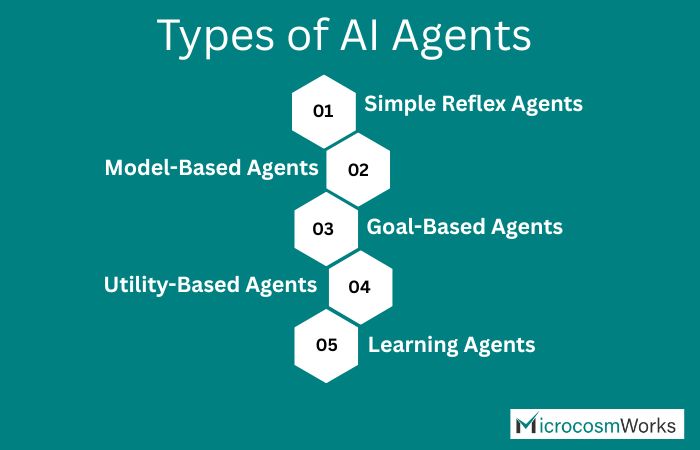Introduction
Artificial Intelligence (AI) agents are revolutionizing industries by automating tasks, making intelligent decisions, and enhancing user experiences. Whether it’s a chatbot assisting customers, an AI-powered recommendation system, or an autonomous trading bot, AI agents are becoming an essential component of modern applications.
This guide will take you through the process of building an AI agent from scratch, covering key concepts, architectures, tools, and step-by-step implementation.
What is an AI Agent?
An AI agent is a system that perceives its environment, processes information, and takes action to achieve specific goals. It can be:
- Reactive: Responds to immediate inputs without memory (e.g., a rule-based chatbot).
- Deliberative: Uses planning and reasoning to achieve long-term goals.
- Learning-based: Adapts and improves over time through machine learning.
AI agents are widely used in:
- Customer service chatbots
- Virtual assistants (e.g., Siri, Alexa)
- Automated trading bots
- Healthcare diagnosis systems
- Self-driving cars
- AI-driven cybersecurity systems
- Smart home automation
- Virtual assistants (e.g., Siri, Alexa)
- Automated trading bots
- Healthcare diagnosis systems
- Self-driving cars
- AI-driven cybersecurity systems
- Smart home automation
Types of AI Agents
AI agents can be categorized based on their intelligence and capability levels:
- Simple Reflex Agents: React to environmental stimuli without learning (e.g., basic chatbots that follow scripts).
- Model-Based Agents: Use an internal model to understand the environment before acting (e.g., self-driving cars that map the road conditions).
- Goal-Based Agents: Take actions to achieve predefined goals (e.g., AI-powered project management tools).
- Utility-Based Agents: Optimize actions based on certain utility functions (e.g., AI recommendation systems like Netflix and YouTube).
- Learning Agents: Continuously learn and adapt using machine learning techniques (e.g., AI-driven fraud detection in banking).

Key Components of an AI Agent
To build an AI agent, you need to consider the following components:
- Perception: The ability to collect data from the environment (e.g., text input, images, sensor data).
- Processing & Reasoning: The decision-making logic, which can be rule-based, machine learning-based, or a combination of both.
- Memory: Stores information for future decision-making (e.g., conversation history, learned behaviors).
- Action Mechanism: Determines how the AI agent interacts with the user or environment (e.g., responding to queries, controlling a robot, executing commands).
Tools & Frameworks for Building AI Agents
Several tools and frameworks can help in building an AI agent:
Programming Languages
- Python: Most widely used for AI development due to its rich ecosystem.
- JavaScript: Used for web-based AI agents.
- Java: Commonly used in enterprise-level AI solutions.
- C++: Used for high-performance AI applications, such as game AI and robotics.
AI Frameworks & Libraries
- TensorFlow / PyTorch: For deep learning-based AI agents.
- LangChain: Helps in developing LLM-based AI agents.
- OpenAI API: Provides powerful language models for chatbot development.
- Hugging Face Transformers: Pre-trained NLP models for various AI applications.
Development Platforms
- n8n / Node-RED: No-code/low-code automation tools.
- Dialogflow: Google’s NLP-powered chatbot framework.
- Rasa: Open-source framework for conversational AI chatbots.
Databases
- Pinecone / FAISS: Vector databases for storing embeddings.
- MongoDB / PostgreSQL: General-purpose databases for AI applications.
- Redis: Used for fast data retrieval in AI systems.
Step-by-Step Guide to Building an AI Agent
Step 1: Define the Objective
Before building an AI agent, define its purpose:
- What problem will it solve?
- Who will use it?
- What kind of interactions will it have?
Example: Creating a virtual assistant to answer FAQs and automate customer support.
Step 2: Choose an AI Model
Depending on the complexity, you can use:
- Rule-based AI: If the problem has clear if-else conditions.
- Machine Learning (ML) AI: If the AI needs to learn from data.
- LLM-based AI: If it involves natural language processing (NLP).
Step 3: Data Collection & Processing
For ML-based AI, you need training data. Sources include:
- Existing chatbot logs.
- FAQ documents.
- Customer service transcripts.
Data preprocessing techniques like tokenization, stemming, and lemmatization can improve data quality.
Step 4: Develop the AI Model
Once the data is prepared, the AI model needs to be trained and tested. This involves choosing the right algorithms, training models on relevant datasets, and evaluating their performance.
For chatbot-based AI agents, tools like OpenAI’s GPT or LangChain can be used to enhance natural language understanding and generation.
Common AI models include:
- Decision Trees: Simple classification models.
- Neural Networks: Used for deep learning applications.
- Transformer Models: Used for NLP applications (e.g., BERT, GPT-4).
Step 5: Add Memory & Context
To enable the AI agent to remember previous interactions, a memory system should be implemented. This ensures a more personalized and context-aware experience for users.
Types of memory storage include:
- Short-term memory (e.g., storing conversation history during a single interaction).
- Long-term memory (e.g., maintaining user preferences across multiple sessions).
Step 6: Integrate with a Frontend
If you want a web-based chatbot, integrate it with a frontend framework. This could be done using:
- Web applications (React.js, Vue.js, Angular)
- Mobile applications (React Native, Flutter)
- Voice-enabled interfaces (Alexa, Google Assistant)
APIs such as Twilio, WhatsApp API, and Slack API can be used for multi-platform integration.
Step 7: Test & Optimize
Before deploying, the AI agent should go through multiple testing phases:
- Unit Testing: Ensures individual components function correctly.
- Integration Testing: Checks how different components interact.
- User Testing: Gathers feedback from real users to improve interactions.
Performance metrics include:
- Accuracy
- Response time
- User satisfaction
Step 8: Deploy the AI Agent
Once testing is complete, the AI agent can be deployed to production.
Deployment Options:
- Cloud Platforms: AWS, Google Cloud, Azure.
- Docker & Kubernetes: For scalable and containerized deployment.
- Web-based Hosting: Vercel, Netlify, Firebase.
Ethical Considerations in AI Agent Development
As AI agents become more advanced, ethical considerations must be addressed:
- Bias in AI: AI models should be trained on diverse datasets to prevent discrimination.
- Data Privacy: User data should be encrypted and handled securely.
- Transparency: Users should know they are interacting with AI.
- Job Displacement: Companies should plan for the societal impact of automation.
Future Trends in AI Agents
- Autonomous AI Agents: AI systems that operate independently with minimal human supervision.
- Multimodal AI: Combining text, image, and voice inputs.
- Quantum AI: AI models running on quantum computers for faster computations.
- AI Regulation & Compliance: Stricter guidelines for AI safety and accountability.
Conclusion
Building an AI agent involves defining objectives, selecting AI models, developing interactions, integrating with a frontend, and deploying it. AI agents have applications in customer service, automation, healthcare, and more. By following this guide, you can build and deploy an AI agent tailored to your needs.
Read More:- AI Agent Development




